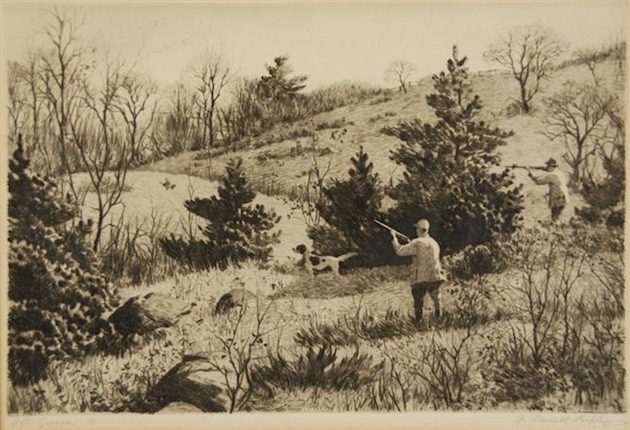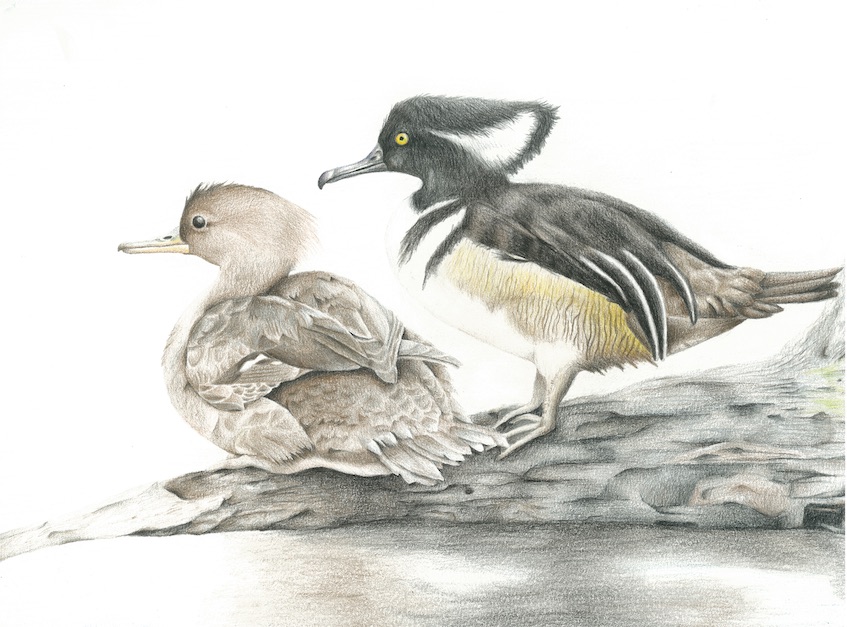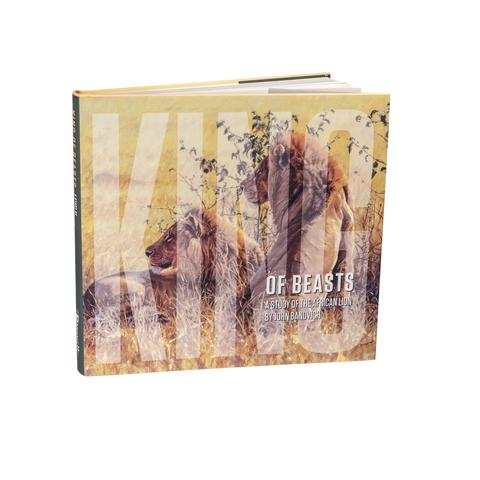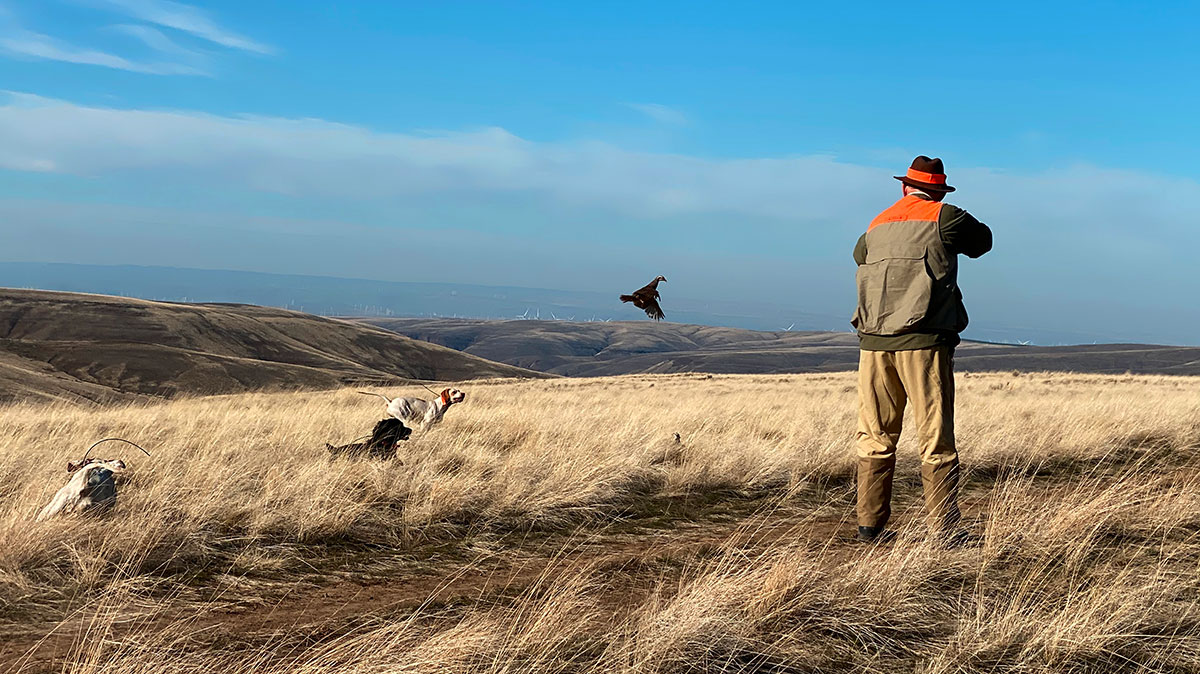I own an etching. But in many ways the etching owns me, for it portrays a very happy time and place in my life.
Of course, the etching was printed 20 years before I was born by an artist who never knew me—an artist who, indeed, died soon after I was born. But that’s the trick, isn’t it? Good art takes you places—sometimes to places you haven’t seen, but often to places and times you have.
When Joanne and I first saw the etching, I stopped dead in my tracks and stared.
“Joanne, that is ‘Down Below’! Look, there is the dirt road down into the valley, the row of trees beside the road, the pond in the valley, the limestone ledge and pines surrounding the pond. And there, there are Jim and I with Tank hunting the cover! And see, there’s the ruffed grouse that Tank flushed flying across the pond.”
Needless to say, I made that shot. Also needless to say, I bought that etching.
The artist who created that scene was Aiden Lassell Ripley, a man who fished, hiked, and hunted all over New England in the 1930s and ’40s. I like to think that the northwest corner of Connecticut—the area of my heyday—was a favorite playground of his. It was said of Ripley that “he thought like a grouse,” and thus was one of the most successful bird hunters in New England. And, no surprise, the ruffed grouse and its pursuit by man and dog was a frequent subject of his oils, watercolors, and etchings.
Forty-five years ago I took a teaching job in Lakeville, Connecticut. In those days the northwest corner was the home of farms, lumber operations, pastures, small towns, and boarding schools. It has since gone through four different building booms, and houses and gentleman farming have changed the landscape. Treelines, barberry patches, apple orchards, and cornfields have been displaced.
A friend of mine once remarked, “Ruffed grouse and Atlantic salmon inhabit the most picturesque parts of our world.” (A. Lassell Ripley—no accident—was also an Atlantic salmon fisherman.) Ripley was looking for the most beautiful sections of the landscape to portray by brush or etching needle, and he found them, hunting, fishing, and painting the places where both species live.
I was lucky enough to live, hunt, and fish in those wild places, too, before the streams, forest edges, and fields yielded to houses, paved roads, and gentleman farms specializing in horses. Not a cow, pig, or chicken remains to be seen there anymore! I don’t paint, but I can remember and put words on paper.
In those days we named our coverts and kept their locations secret from other hunters. Only a very trusted hunting partner was invited on a hunt and shown the location of a favorite covert—and only with the understanding that he would not go back to that covert without the permission or presence of the original hunter! Good manners make good hunting partners; bird hunters understand that.
Trustworthy shooters get invited back. I would have invited Lassell in a heartbeat, and I hope that he would have invited me.
The birds were plentiful in the hedgerows and along the edges of the paths of the covert we named “Down Below.” Ruffed grouse are wily, fast, wild things known for their ability to fly through thick cover and almost immediately put a tree, bush, or sapling between them and a hunter. “Thinking like a grouse” and covering the flight path a bird would take made me a better bird hunter. And the possible flight path shifted with every step I or my dog, Tank, took. A good day was measured by the way the birds flew, the way the dog worked, or the good opportunities for my hunting partner, not by the birds in my bag. And, of course, ruffies live in some of the most beautiful places on earth. Lassell knew that, and now, more than ever, so do I.
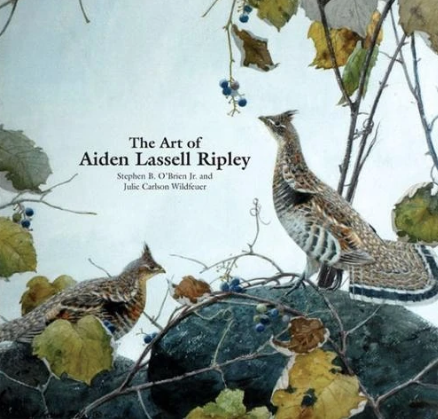 The Art of Aiden Lissdell Ripley is the most comprehensive book to date on the artist chronicling paintings from his early life and work, illustrations and murals, landscapes and cityscapes, scenes of the south and his well known sporting art.
The Art of Aiden Lissdell Ripley is the most comprehensive book to date on the artist chronicling paintings from his early life and work, illustrations and murals, landscapes and cityscapes, scenes of the south and his well known sporting art.
Through numerous illustrations, this full-sized 11 x 12 inch book documents the artist’s progression and growth, from his early award-winning and acclaimed rise as an Impressionist to his accurate and detailed depictions that continue to shape sporting art today.
Aiden Lassell Ripley (1896-1969) is widely known as one of America’s great sporting artists. Born in Wakefield, Massachusetts, Ripley developed an interest in painting at an early age. After returning from service in World War I, he attended that Boston Museum School were he studied with the country’s top artists, including Philip Leslie Hale (1865-1931) and Frank W. Benson (1862-1951).
While attending the Boston Museum School, Ripley was awarded the prestigious Paige Traveling Fellowship to travel, study and paint in Europe. Upon his return in 1925, he was elected t the Guild of Boston Artists. His first exhibition at the Guild in 1926, focusing on the New England countryside and depictions of urban life in Boston, was a smashing success. Buy Now

